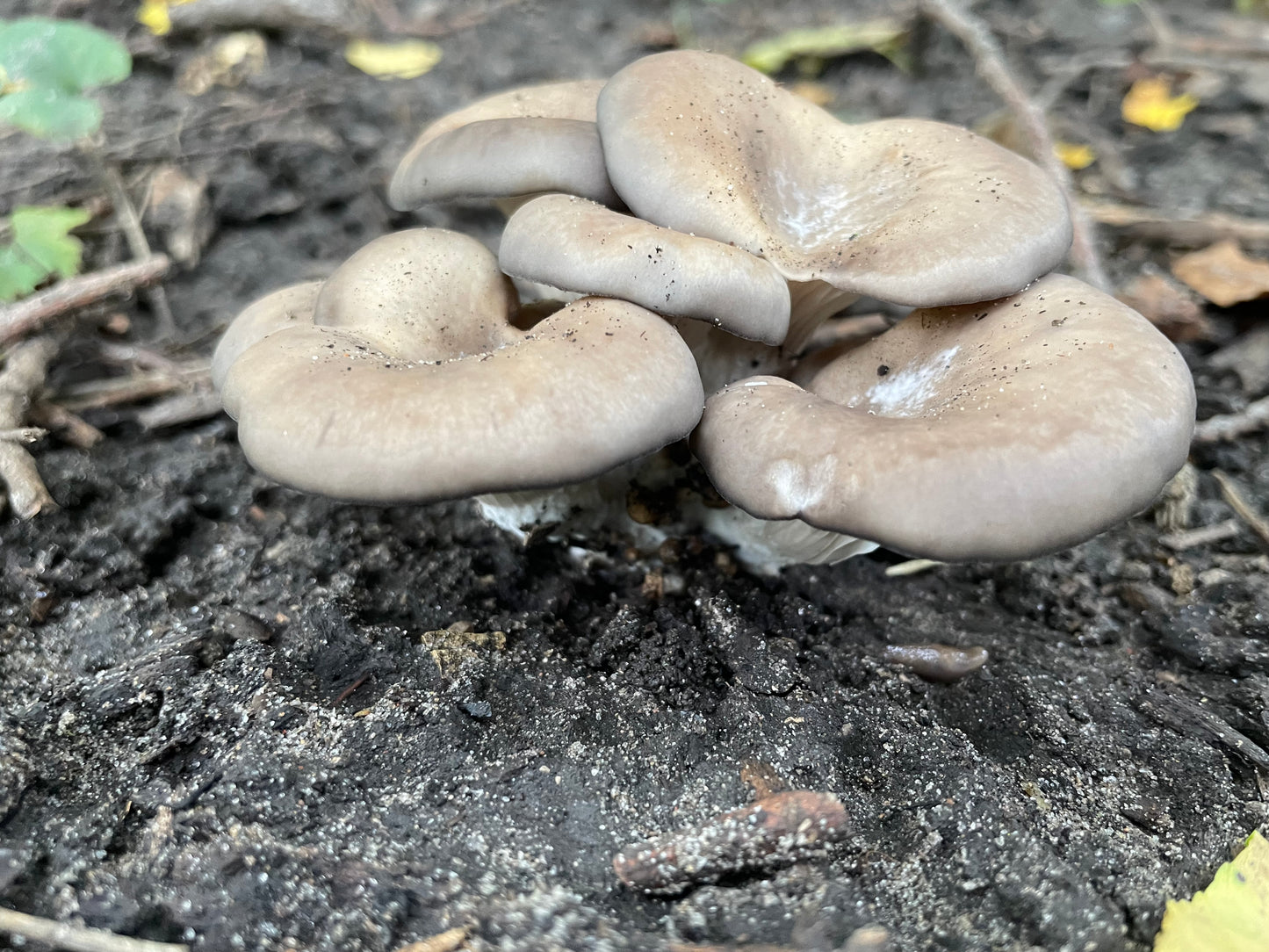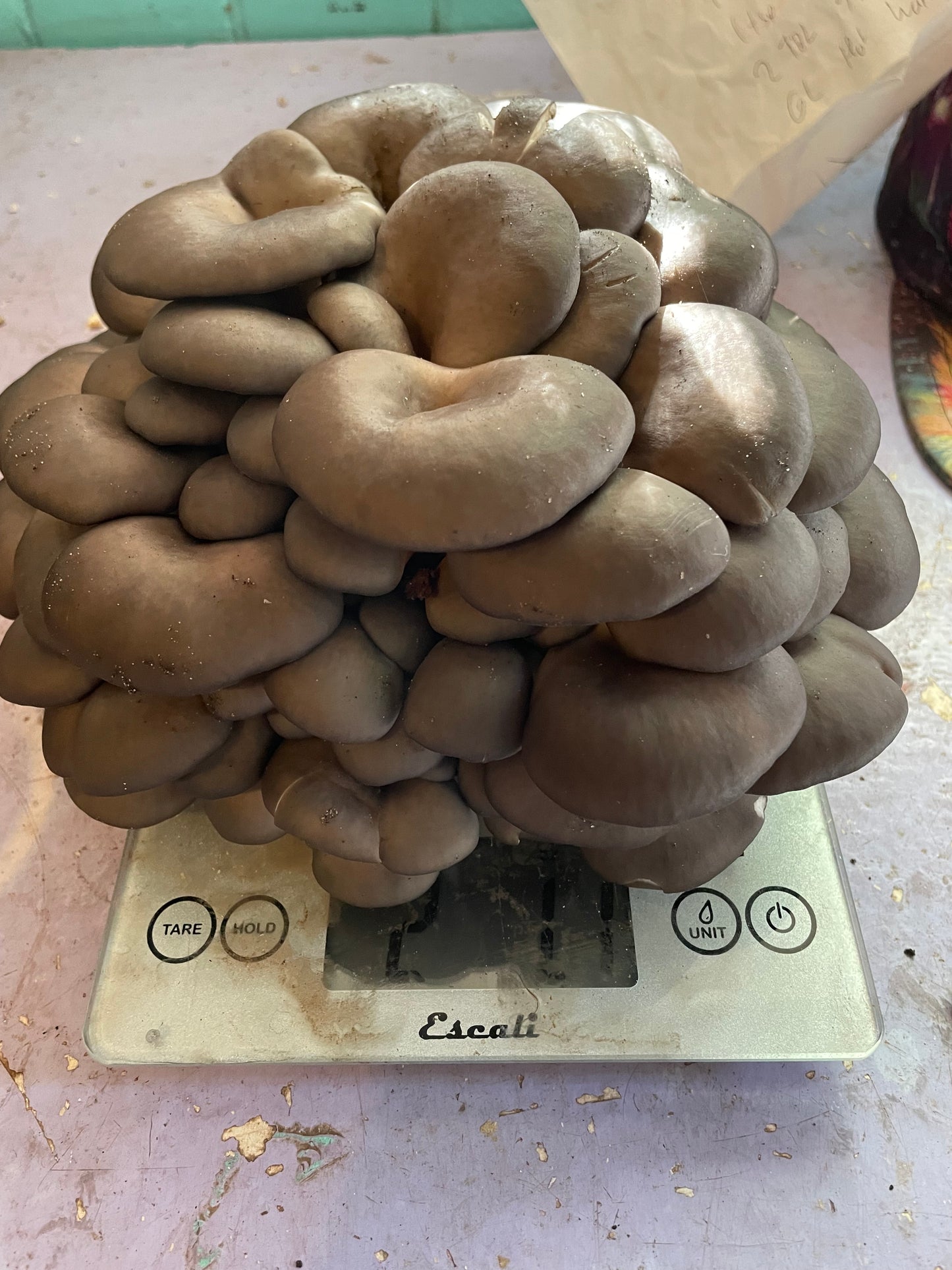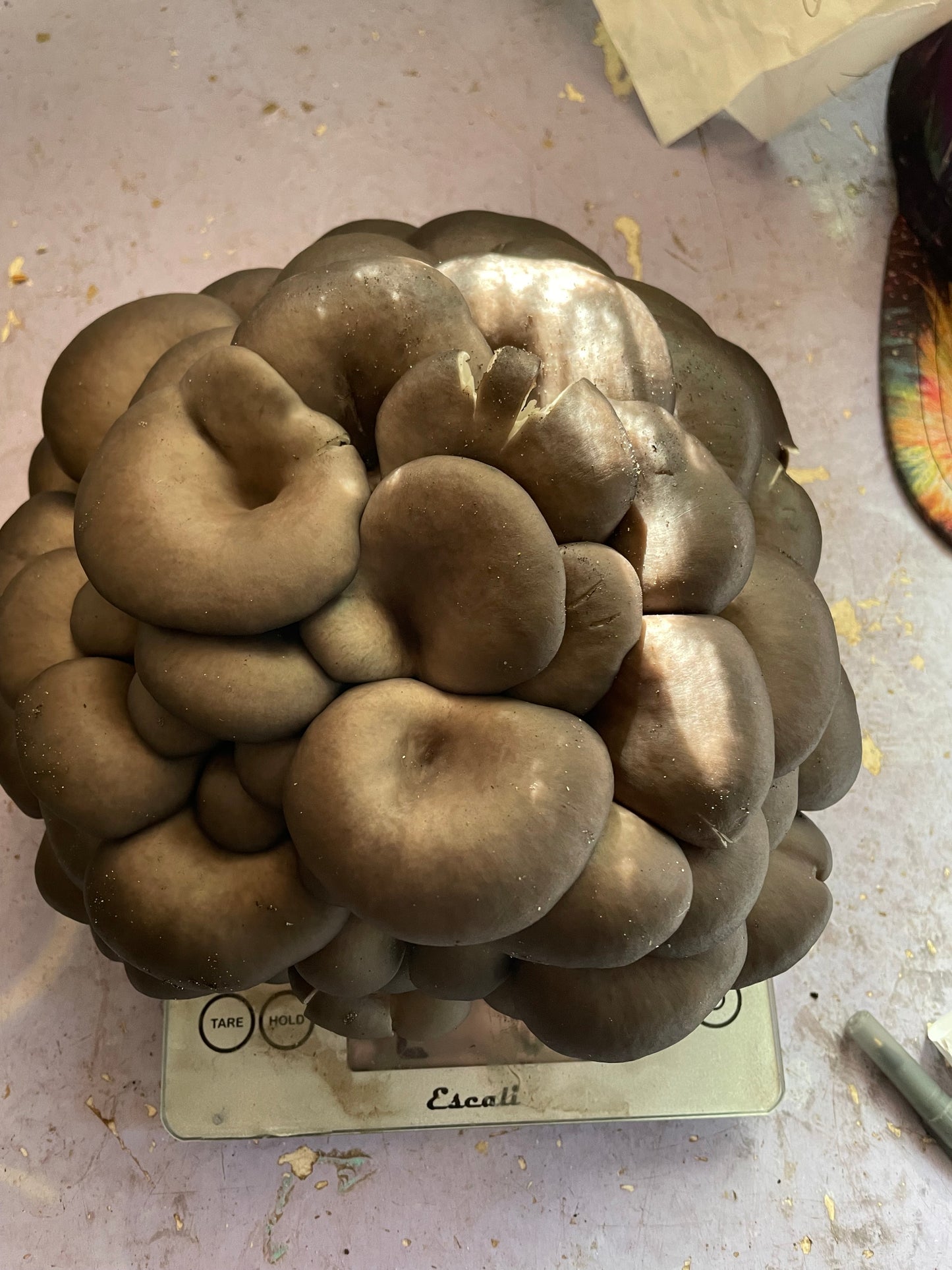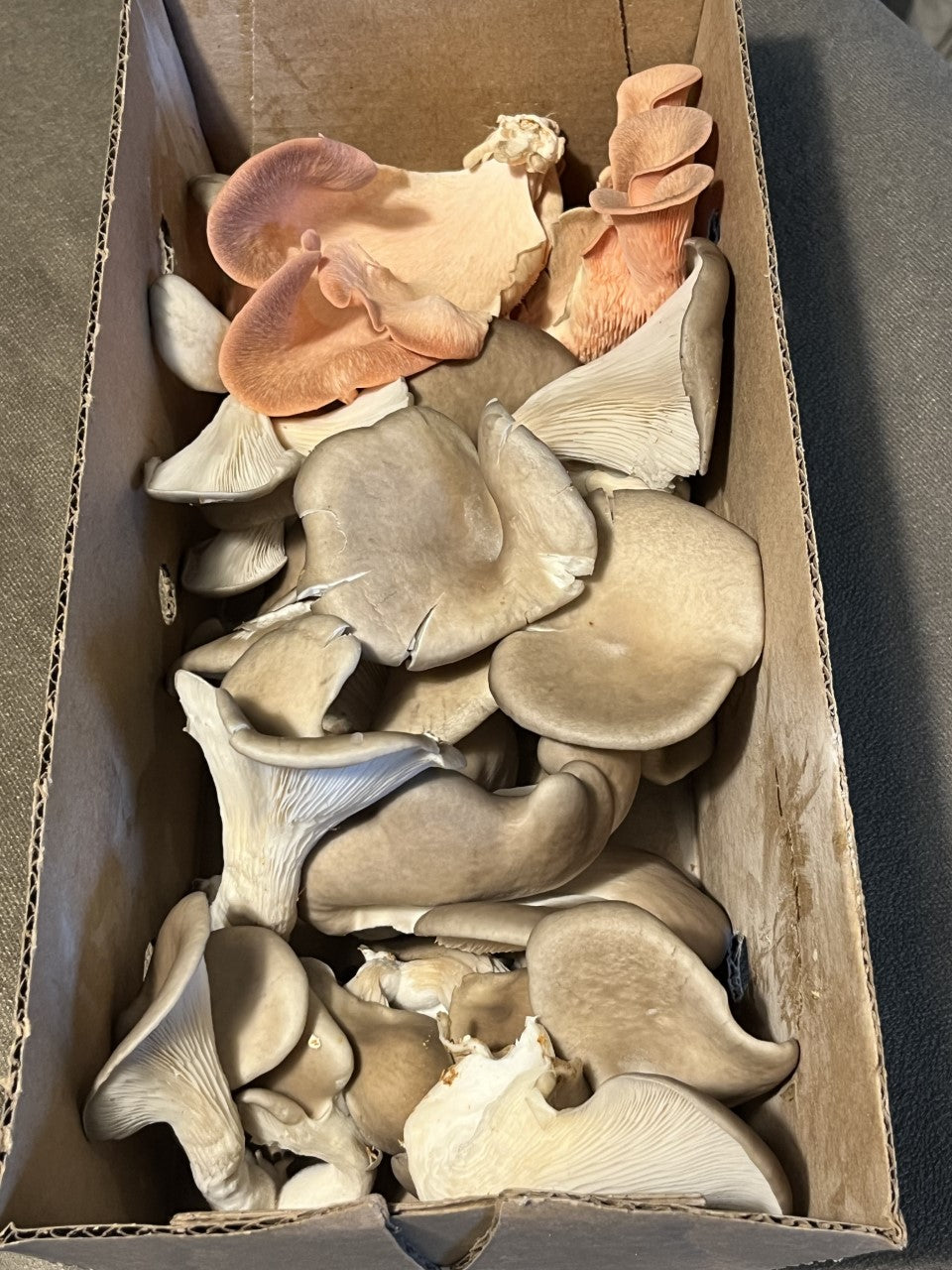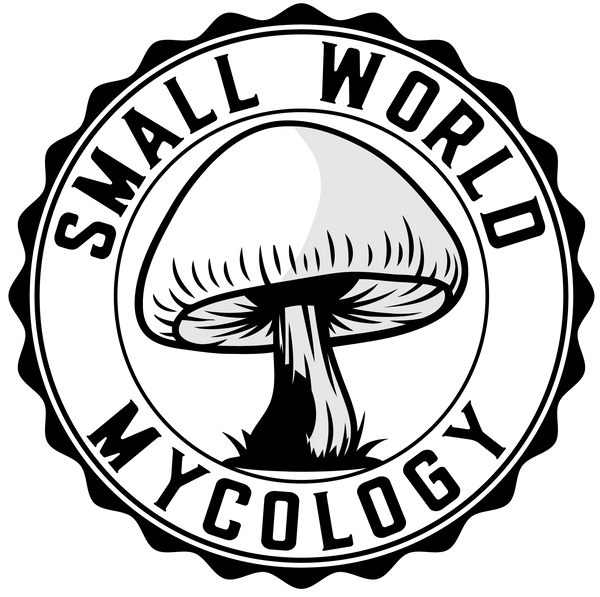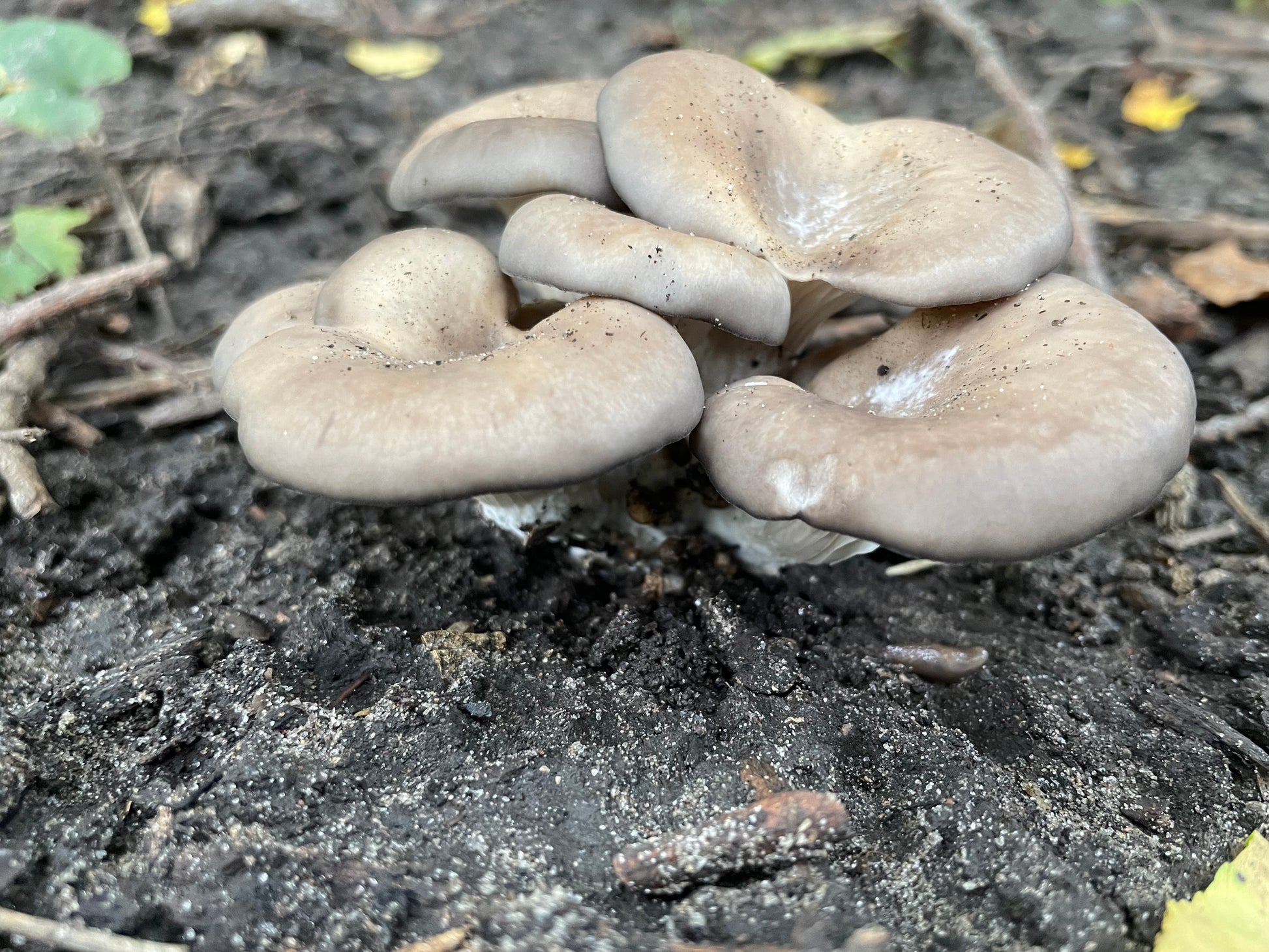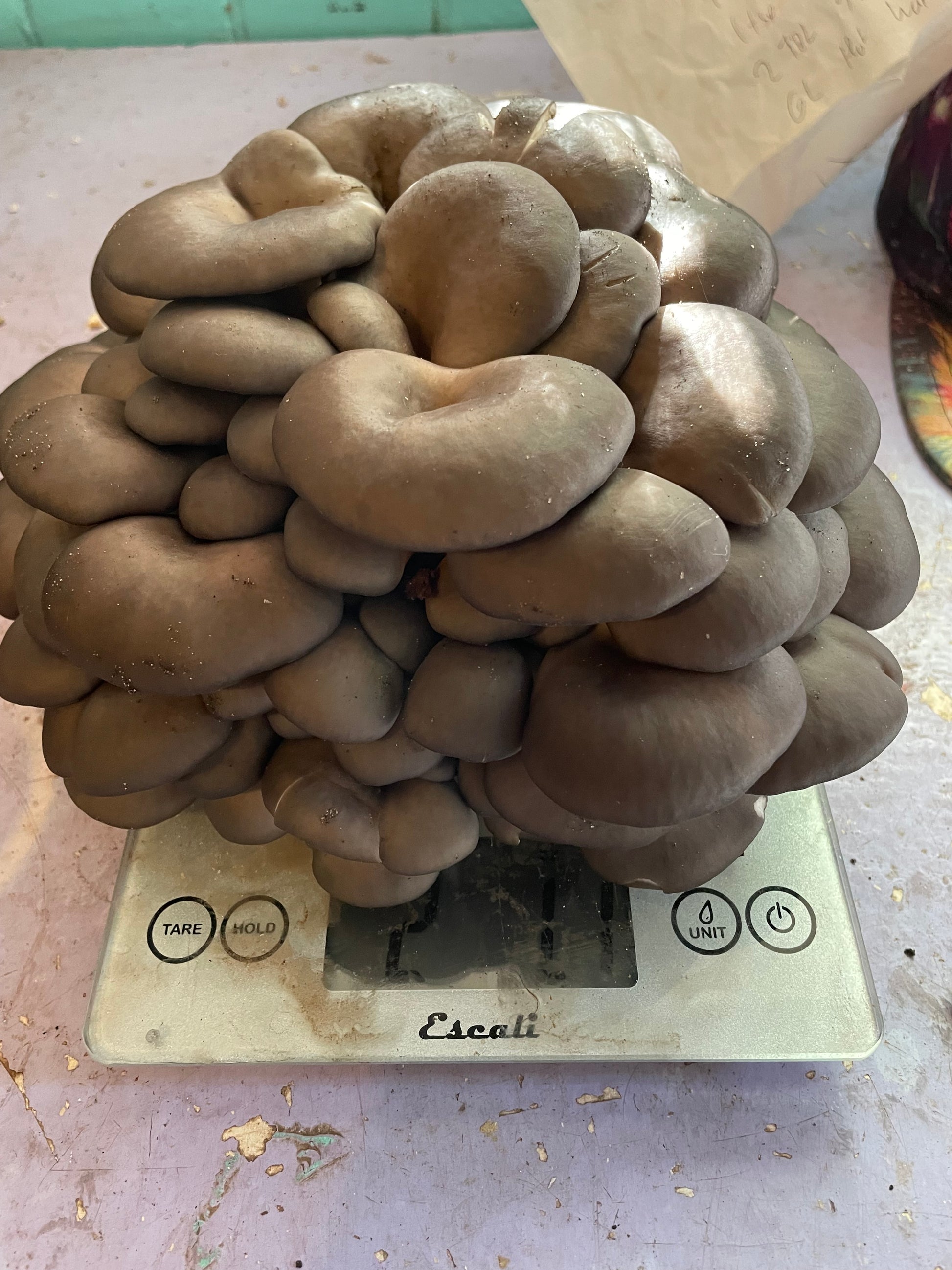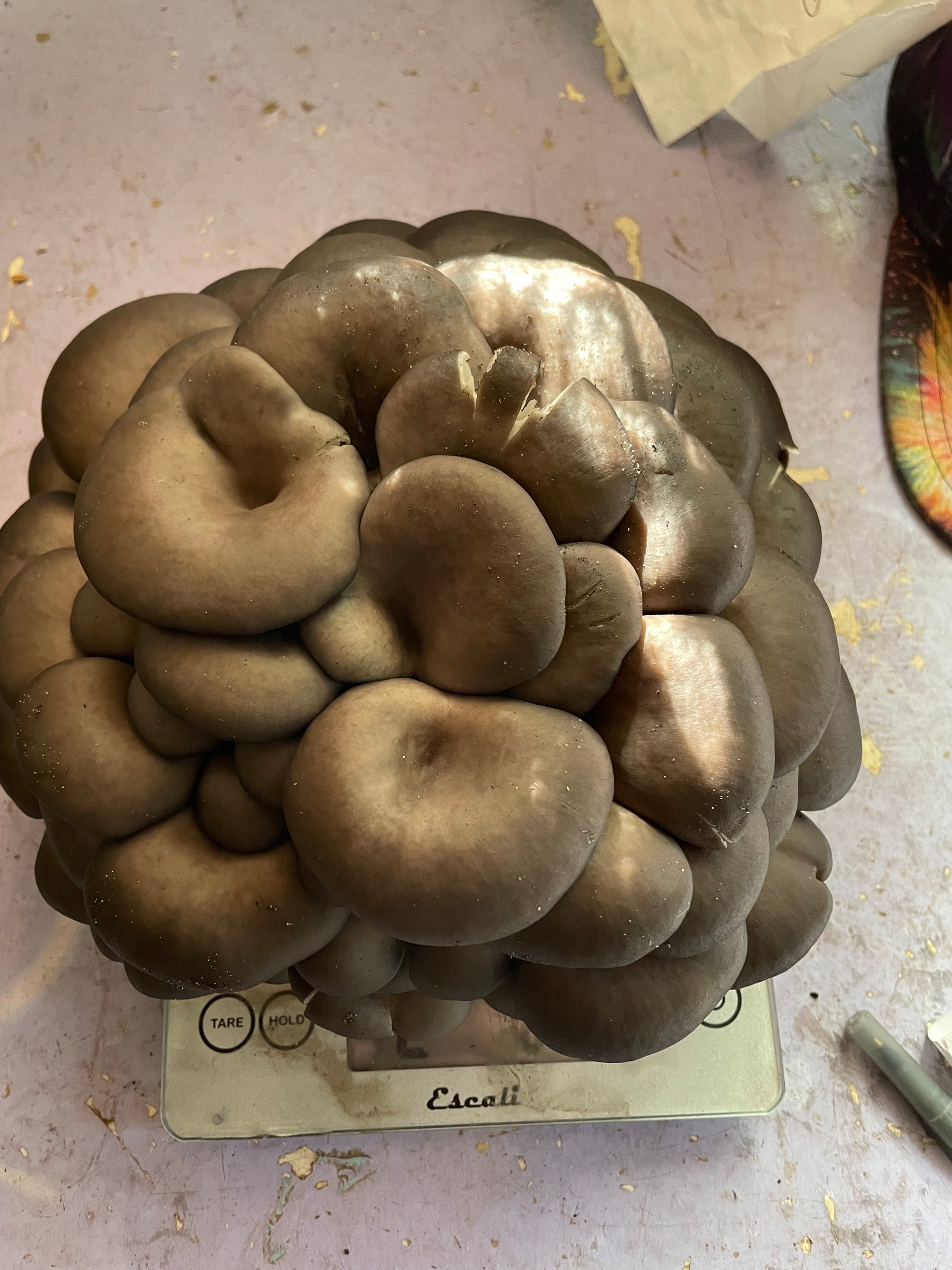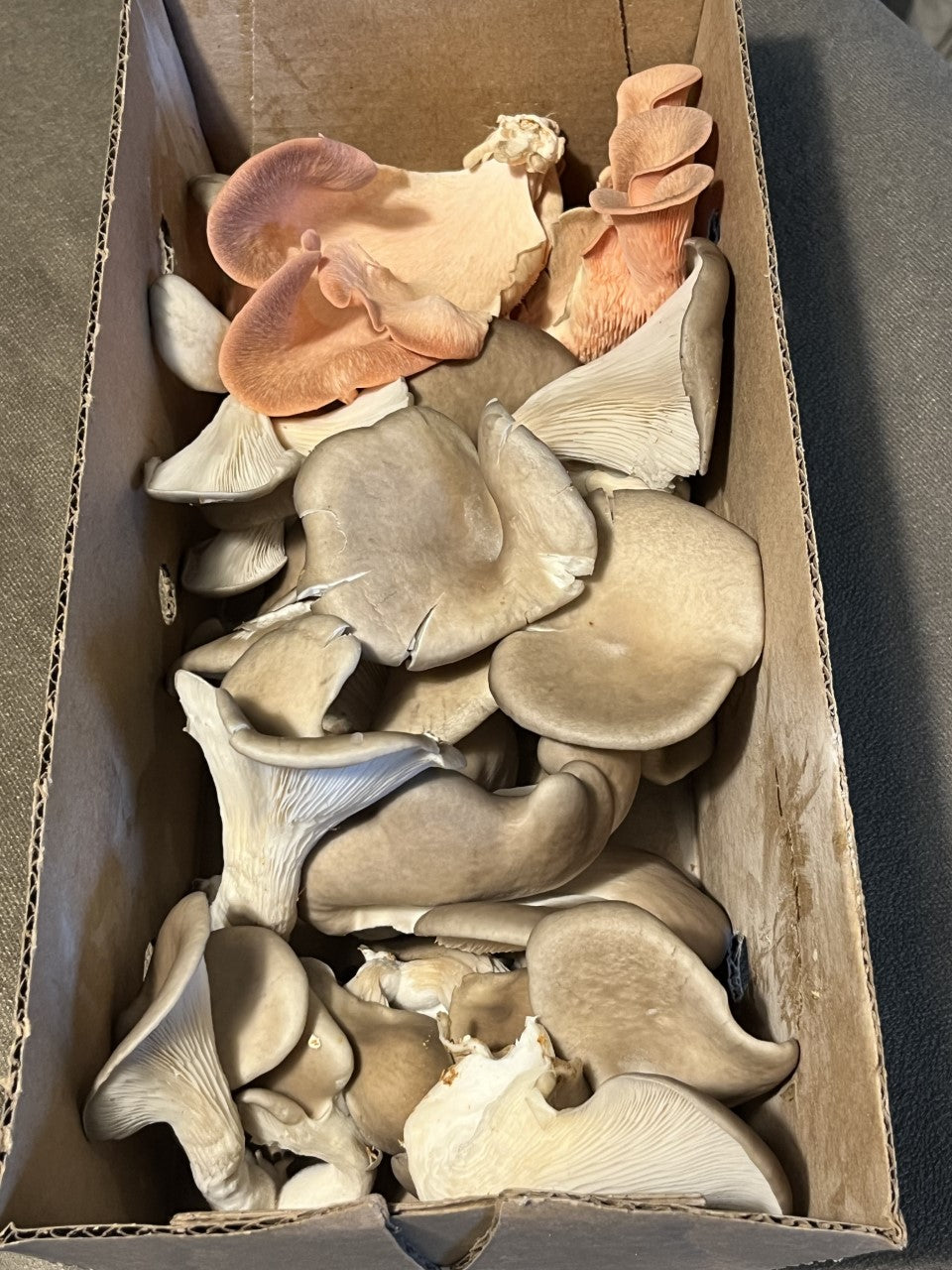Small World Mycology
Pleurotus ostreatus - Wild Brown Oyster Genetics
Pleurotus ostreatus - Wild Brown Oyster Genetics
Scientific Name: Pleurotus ostreatus
Common Names: Brown Oyster, Wood Oyster, Tree Oyster, Oyster Shelf, Straw Mushroom, Hiratake, Tamogitake
Description: A large, tender, delicious mushroom with a beautiful brown colored cap, this cultivar was cloned from local Southwestern Ontario specimens. Brown oyster and other P. ostreatus species are some of the easiest to grow because they fruit using many substrates over a wide range of temperatures: Hardwood, straw, and coffee grinds can produce huge yields of beautiful fruitbodies. Brown Oyster is the best choice for the beginner. Lower temperatures and higher light lead to darker cap color, while high temperatures and low light can produce an almost albino form. This cold temperature variety is a good choice for spring/fall outdoors or winter in the greenhouse.
Growth ConditionsPetri Dish, Slant, or Liquid CultureGrowth Medium: Malt extract or potato water agarTemperature: 21 deg CSpawn RunGrowth Medium: supplemented hardwood sawdustTemperature: 21 deg CBag Filter Type: "A"Primordia FormationTemperature: 10-16 deg CHumidity: 95-100 %Time (days): 3-5 daysLight (Lux): 1000-2000 luxFruit-body GrowthTemperature: 10-21 deg CHumidity: 80-95 %Time: 3-5 daysLight: 1000-2000 luxHarvest Hint: With a moderately high humidity primordia will form at the location slits are cut in the bag. Alternatively the bag can be opened from the top and rolled down for top-fruiting. Harvest the mushroom before the cap edges turn upward and spore release begins. Color will be darker if harvested early. If the light level and airflow are too low the mushrooms will form an undesirable coral-like form.
Couldn't load pickup availability
